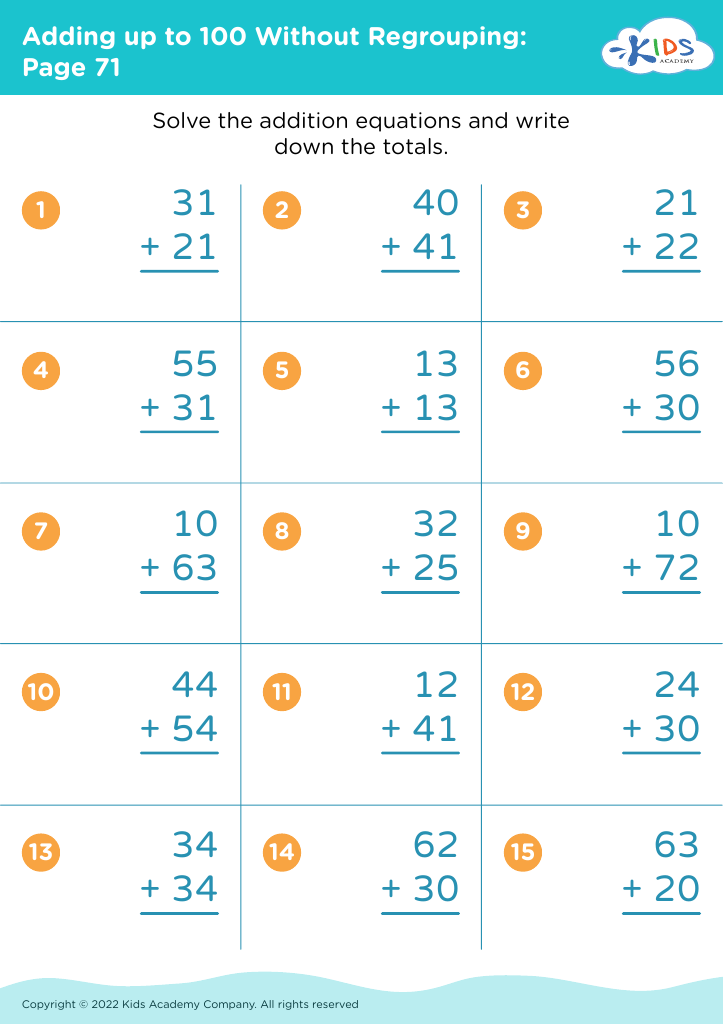Visual representation of fractions Math Worksheets for Ages 4-8
6 filtered results
-
From - To
Explore our engaging "Visual Representation of Fractions" math worksheets designed specifically for children ages 4-8. These interactive resources help young learners grasp fundamental fraction concepts through vibrant visual aids and hands-on activities. Ideal for parents and educators, our worksheets nurture a love for math while promoting critical thinking and problem-solving skills. Kids will enjoy identifying, comparing, and creating fractions as they visualize parts of a whole. Whether in the classroom or at home, these worksheets offer a fun and effective approach to mastering fractions, ensuring a solid math foundation for early learners. Discover the joy of learning fractions today!
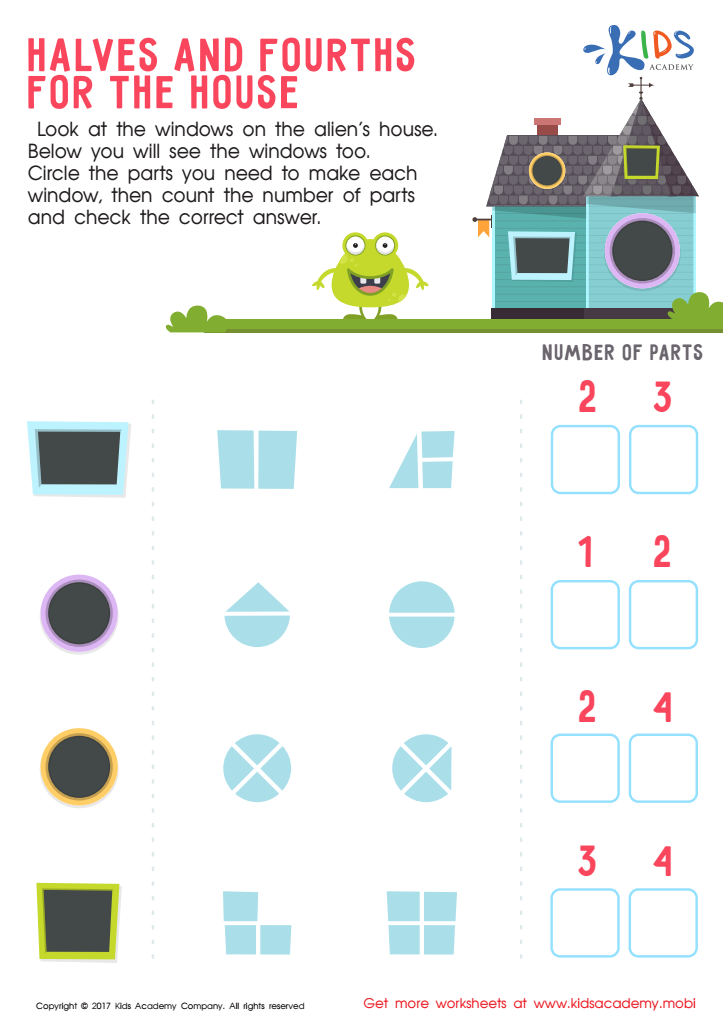

Halves and Fourths for the House Worksheet
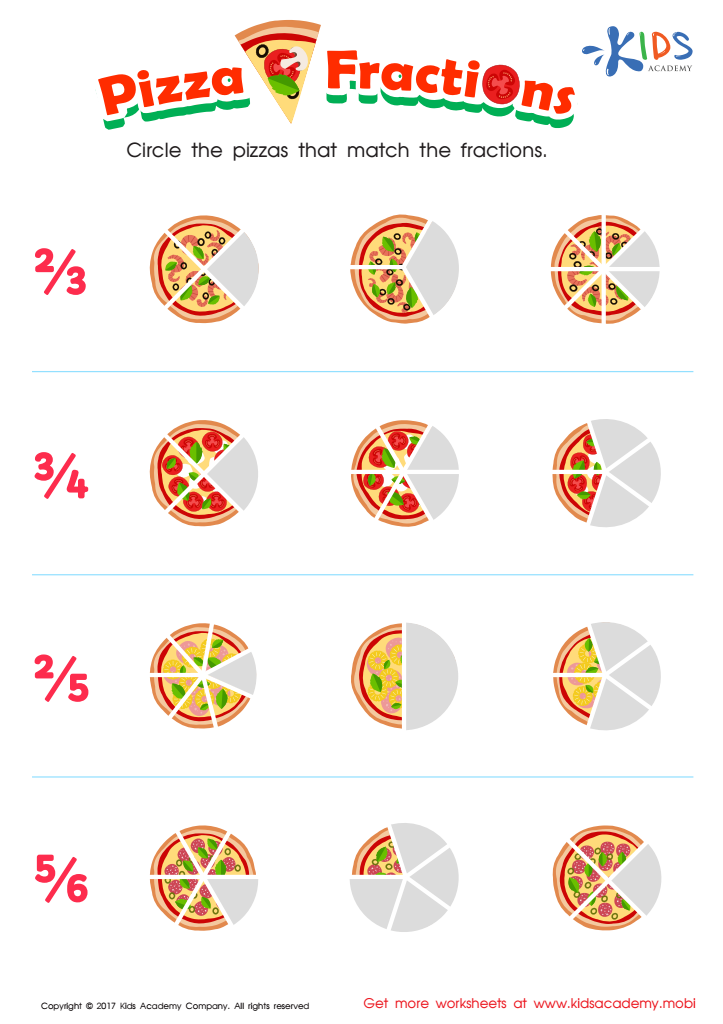

Fractions: Pizza Printable
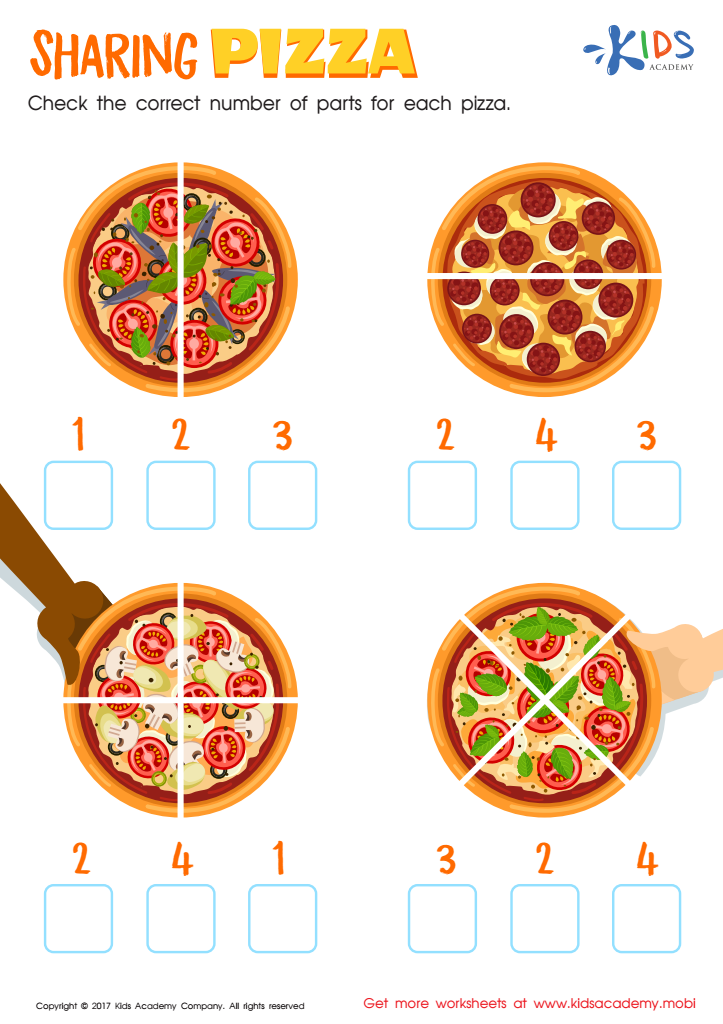

Sharing Pizza Worksheet


Name That Fraction Worksheet
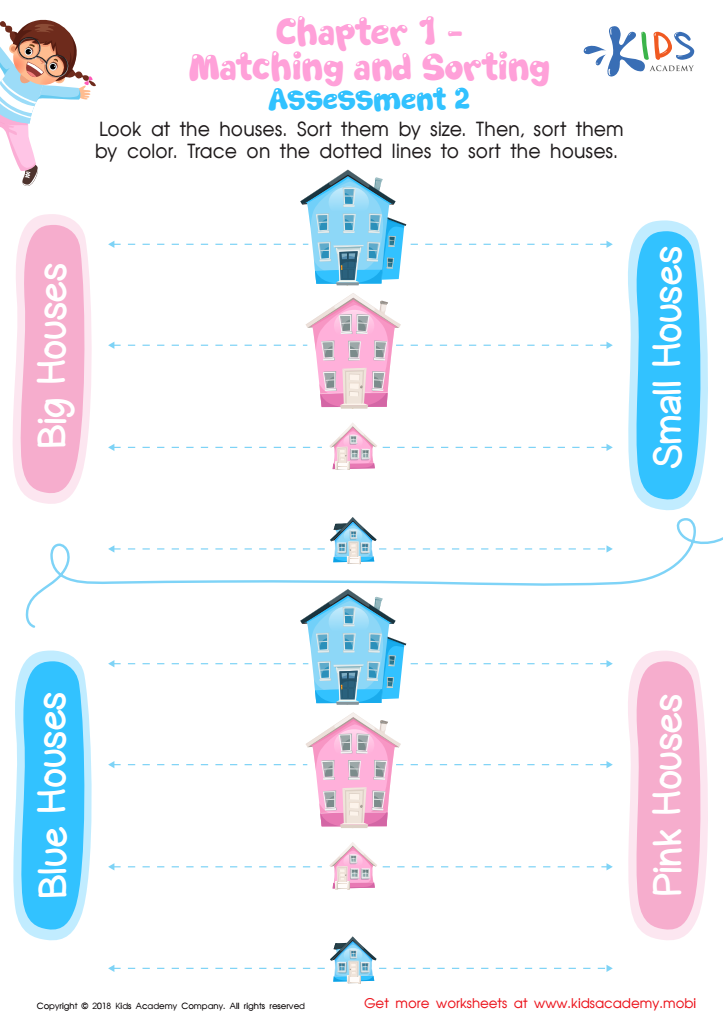

Matching and Sorting for Preschool: Assessment 2 Worksheet
Understanding fractions is a foundational math concept, and visual representation plays a crucial role in helping children aged 4-8 grasp these ideas effectively. At this age, children are often more receptive to learning through visual aids and manipulatives. Visual representations, such as pie charts, bar models, and fraction circles, help concretize abstract concepts, making them more accessible and engaging.
Parents and teachers should prioritize visual representation because it enables children to see fractions in real terms, fostering better comprehension. For instance, by using pizza slices to illustrate the idea of sharing, children can easily relate fractions to everyday situations, enhancing their motivation and interest in learning.
Moreover, visual aids can cater to various learning styles, allowing children to explore and express their understanding in diverse ways. This differentiation can boost confidence and reduce anxiety about math. Early mastery of fractions through visual representation lays the groundwork for more advanced math topics in the future.
Finally, encouraging discussions around visual fractions promotes critical thinking and problem-solving skills. Engaging in these conversations equips children not only with mathematical understanding but also with valuable communication skills, underscoring the importance of visual representations in early math education.
 Assign to My Students
Assign to My Students

